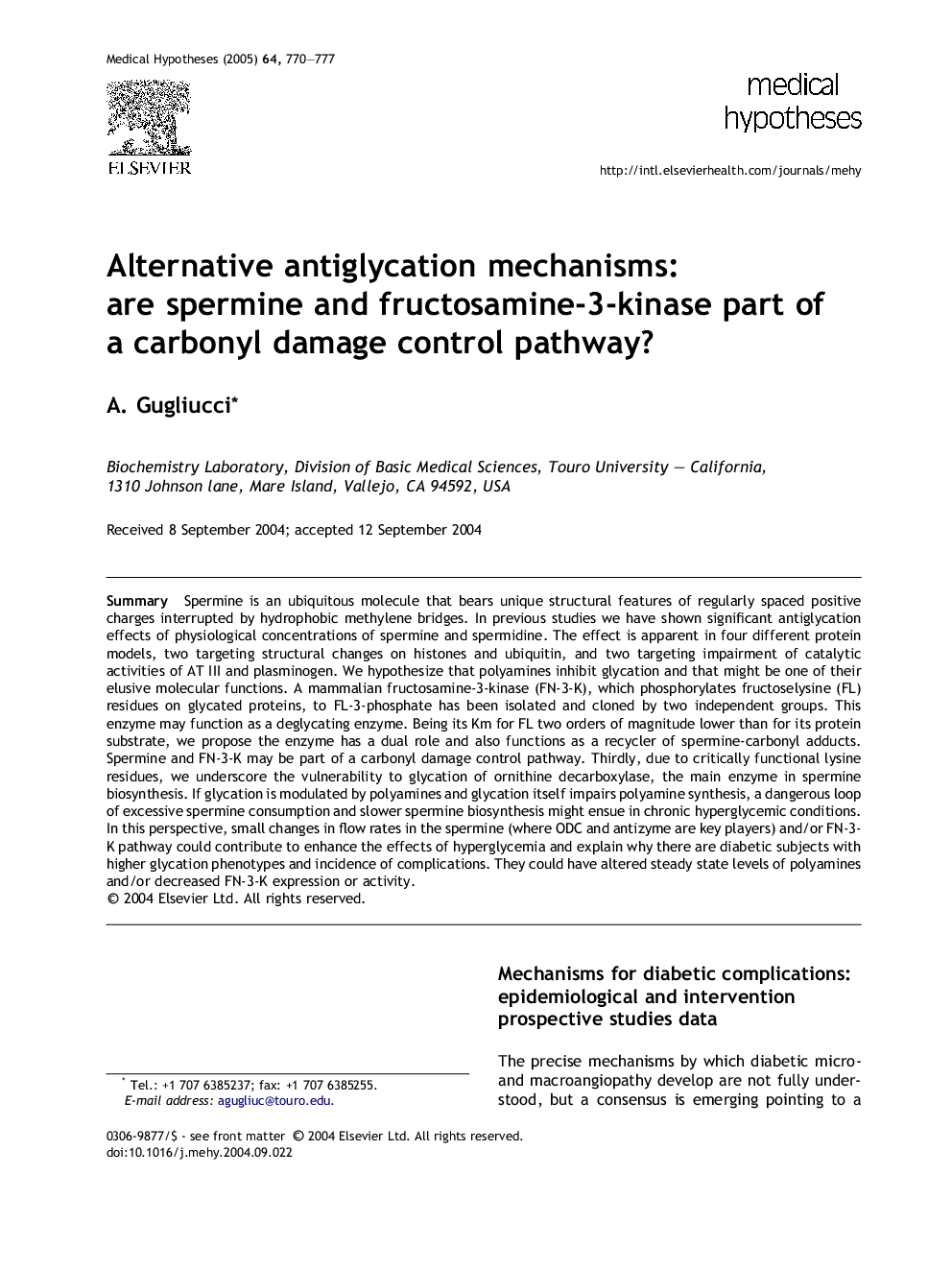| کد مقاله | کد نشریه | سال انتشار | مقاله انگلیسی | نسخه تمام متن |
|---|---|---|---|---|
| 8995797 | 1115105 | 2005 | 8 صفحه PDF | دانلود رایگان |
عنوان انگلیسی مقاله ISI
Alternative antiglycation mechanisms: are spermine and fructosamine-3-kinase part of a carbonyl damage control pathway?
دانلود مقاله + سفارش ترجمه
دانلود مقاله ISI انگلیسی
رایگان برای ایرانیان
موضوعات مرتبط
علوم زیستی و بیوفناوری
بیوشیمی، ژنتیک و زیست شناسی مولکولی
زیست شناسی تکاملی
پیش نمایش صفحه اول مقاله

چکیده انگلیسی
Spermine is an ubiquitous molecule that bears unique structural features of regularly spaced positive charges interrupted by hydrophobic methylene bridges. In previous studies we have shown significant antiglycation effects of physiological concentrations of spermine and spermidine. The effect is apparent in four different protein models, two targeting structural changes on histones and ubiquitin, and two targeting impairment of catalytic activities of AT III and plasminogen. We hypothesize that polyamines inhibit glycation and that might be one of their elusive molecular functions. A mammalian fructosamine-3-kinase (FN-3-K), which phosphorylates fructoselysine (FL) residues on glycated proteins, to FL-3-phosphate has been isolated and cloned by two independent groups. This enzyme may function as a deglycating enzyme. Being its Km for FL two orders of magnitude lower than for its protein substrate, we propose the enzyme has a dual role and also functions as a recycler of spermine-carbonyl adducts. Spermine and FN-3-K may be part of a carbonyl damage control pathway. Thirdly, due to critically functional lysine residues, we underscore the vulnerability to glycation of ornithine decarboxylase, the main enzyme in spermine biosynthesis. If glycation is modulated by polyamines and glycation itself impairs polyamine synthesis, a dangerous loop of excessive spermine consumption and slower spermine biosynthesis might ensue in chronic hyperglycemic conditions. In this perspective, small changes in flow rates in the spermine (where ODC and antizyme are key players) and/or FN-3-K pathway could contribute to enhance the effects of hyperglycemia and explain why there are diabetic subjects with higher glycation phenotypes and incidence of complications. They could have altered steady state levels of polyamines and/or decreased FN-3-K expression or activity.
ناشر
Database: Elsevier - ScienceDirect (ساینس دایرکت)
Journal: Medical Hypotheses - Volume 64, Issue 4, 2005, Pages 770-777
Journal: Medical Hypotheses - Volume 64, Issue 4, 2005, Pages 770-777
نویسندگان
A. Gugliucci,